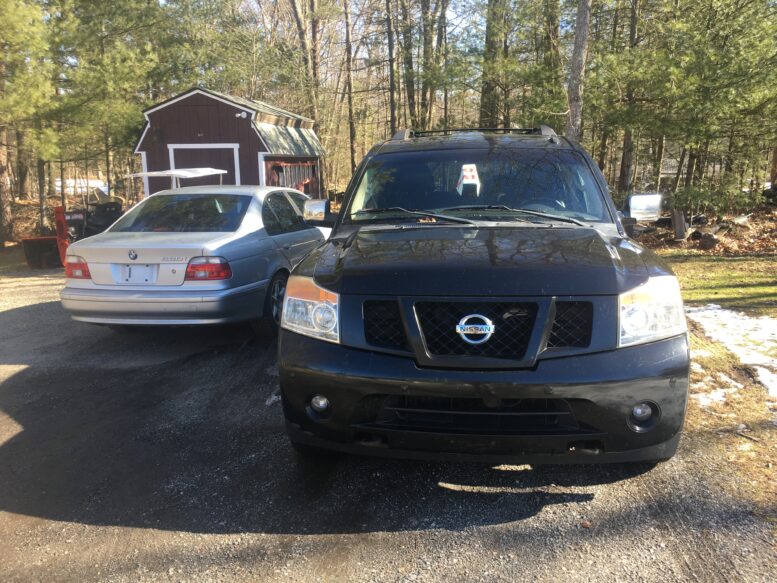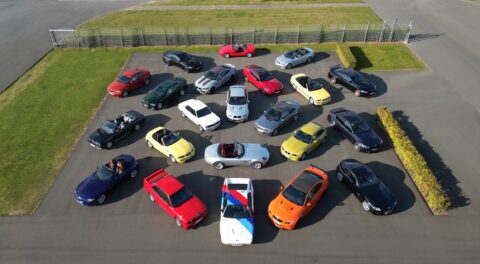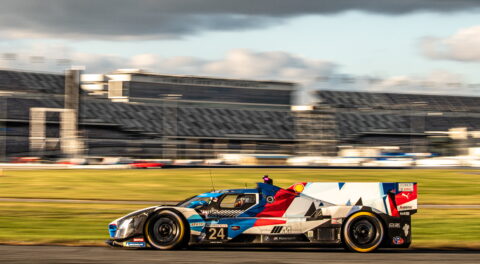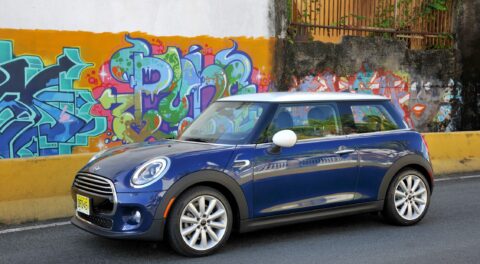Let me set the wayback machine to 2010 for a moment. A Chamonix (white) ’72 2002tii in Rockland, Maine showed up on Craigslist for a good price. I contacted my friend Andrew Wilson, president of the Maine BMW CCA chapter, and asked him if he knew the car. He said that he did, and that for what the seller was asking, he thought I’d be very pleased with what I saw. I dropped everything, found a U-Haul dealer up there, called and reserved an auto transporter for the tow home in case I decided to buy the car, verified that a Bank of America branch office in Rockland was open until 3 p.m., and immediately headed north in the Suburban. I checked out the tii, liked it, asked the “what do you need to get for it?” question that has largely taken the place of haggling for me, the seller named a much lower price than I expected, and I burned rubber in the ‘Burb to the bank to withdraw the cash, then to the U-Haul dealer to pick up the transporter. I paid the seller, loaded the car, and headed south, scarcely believing how flawlessly this plan came together. That car was “KUGEL,” the one on the cover of my first book. I owned it for about ten years until I bought Louie (the other ’72 tii, the Ran When Parked car), didn’t need two of the same cars but did need to replenish the dwindling family savings, and eventually sold the car to CCA members Jim and Susan Strickland in 2019.
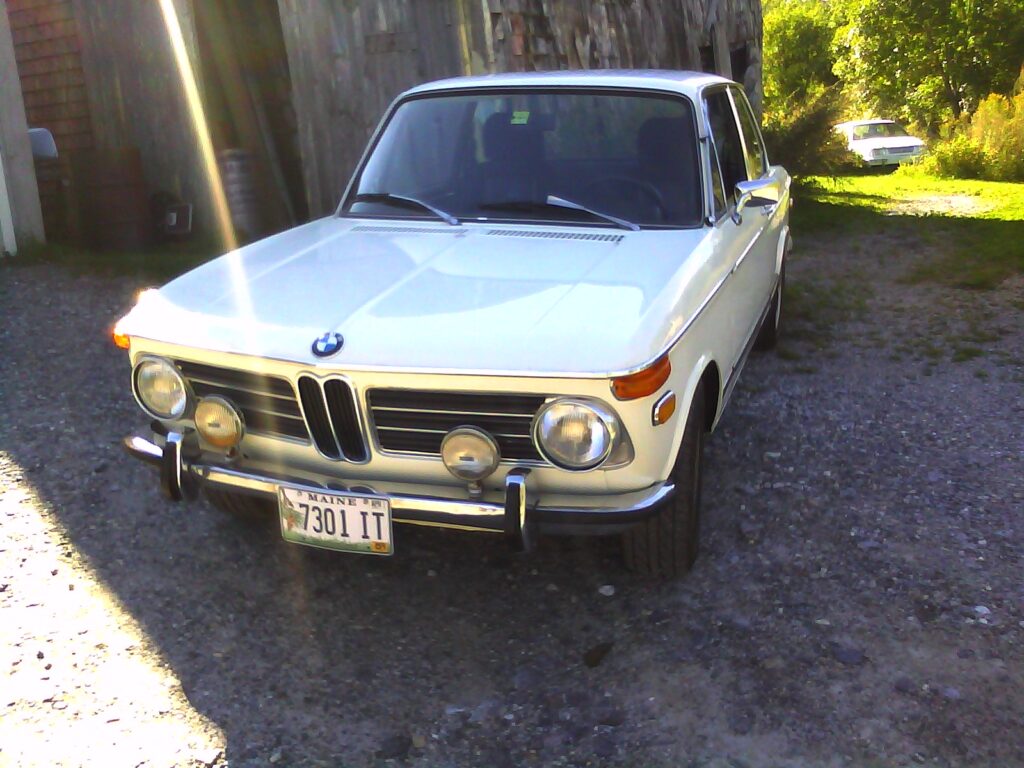
Dear departed KUGEL when I bought it up in Maine in 2010.
The whole episode sticks in my mind as dream-like not only because of the car, but because of the logistics of the purchase. It was the flawless manifestation of a modified version of what I’ve come to call “bag-and-drag” (showing up with a truck, a trailer, and money, buying the car, and towing it home in a single trip). Although renting a U-Haul auto transporter one-way is substantially more expensive (about $125 as opposed to about $55 round-trip), it meant that I could beat it out the door and head straight to the car instead of adding at least an hour to stop at U-Haul, an hour in which someone else could beat me to the prize. It was similar with the money—even at 2010 tii values, I don’t routinely keep that amount of cash lying around in the house just in case a drop-everything car shows up on the radar, and verifying that there was a branch office of my bank in Rockland was a very clean way to deal with the cash issue.
I’ve never had a purchase happen this way again. I’ve tried, but either the one-way auto transporter rental has screwed up, or I couldn’t get to the bank before closing time, or I didn’t want to travel with that much “just in case” cash. But even with round-trip U-Haul rental and showing up with cash, threading this needle is a pain. When I’ve needed to rent an auto transporter RIGHT NOW, I’ve often found that there’s not one available within 40 miles, adding hours to both ends of the day. Unless you’re Wayne Carini with a truck AND a trailer in the driveway, and enough media recognition that you can whip out a business checkbook instead of cash, the whole “bag-and-drag” thing makes for a nice self-image, but the reality is much more frustrating.
However, that doesn’t mean that I don’t want it to continue to be part of my self-image. Some of my best purchases have been bag-and-drag transactions, and it’s a tool that, once you’ve had in your toolbox, you feel hamstrung when it’s taken away.
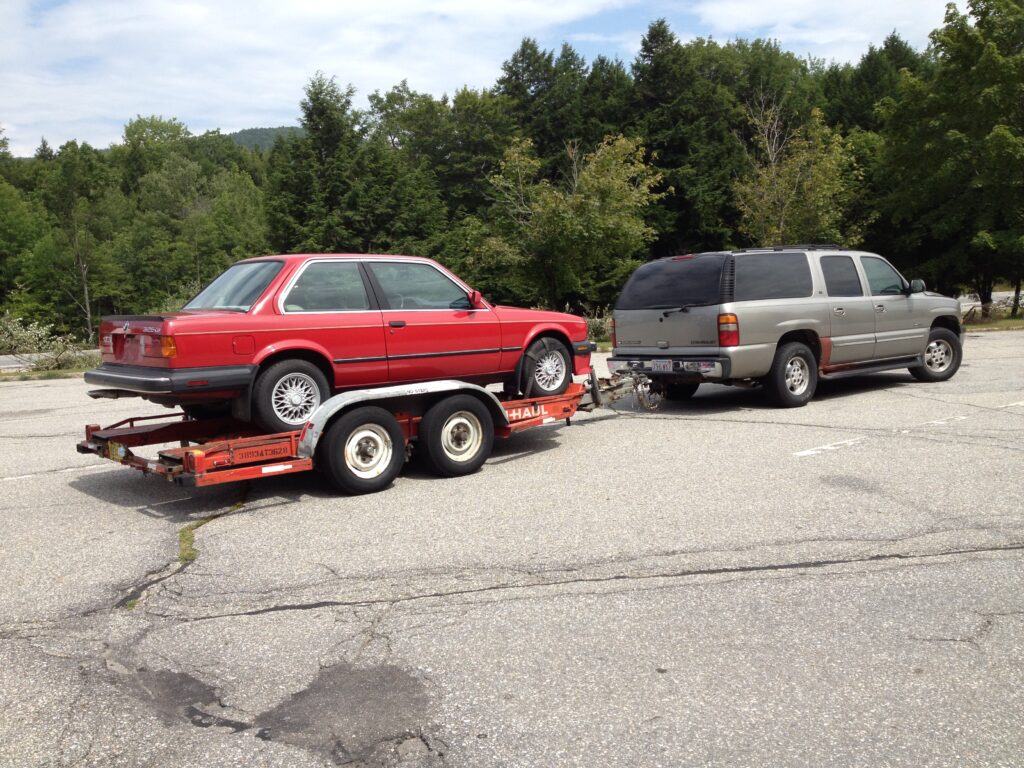
The Grade-A bag-and-drag of the 1987 E30 325is in 2014.
In September I sold the giant 2008 Chevy Silverado 3500HD Duramax diesel dually (e.g., the formerly mouse-infested truck). I made windfall money on the sale (something that never happens to me), and as was the case with KUGEL five years ago, I needed the money more than I needed the vehicle, so I don’t regret it at all. But I was astonished by how much the absence of a tow vehicle / stuff hauler affected my self-image. I became kind of obsessed with replacing it, putting an amount of time into looking for another truck commensurate with what I usually reserve for vintage enthusiast vehicles. I decided a full-sized SUV made more sense for me than a truck. I didn’t want another X5 or anything else German, as a) they’re a bit on the small side, and b) I’m keenly aware of the degree to which any depreciated $4,000 German car is a project car, and I really wanted whatever I bought to be more of a tool. Never having owned a Japanese SUV or truck, I thought I’d try eating at the Japanese buffet for a change of pace. I focused on Toyota Sequoias, but in this part of the country all of the first-generation Sequoias have undercarriage rot. The frame may have been replaced as part of a Toyota recall, but the rest of the undercarriage in lifelong New England cars is typically weak. The 2nd-gen Sequoias appear to be sturdier, but the “Toyota tax” is real, with people asking nine grand for 2008 Sequoias with 200k.
So I somewhat reluctantly turned my focus to Nissan Armadas. They share the Titan truck platform, used ones are plentiful, and many are in my $4,000-ish price range. I found a 183,000-mile 2008 Armada LE, black with a nice-looking black interior with wood trim, and with the tow package, for a four grand asking price. The vehicle, however, was off the road, so only a short slow drive on local roads was possible. There’s no doubt that this widens the envelope of risk.
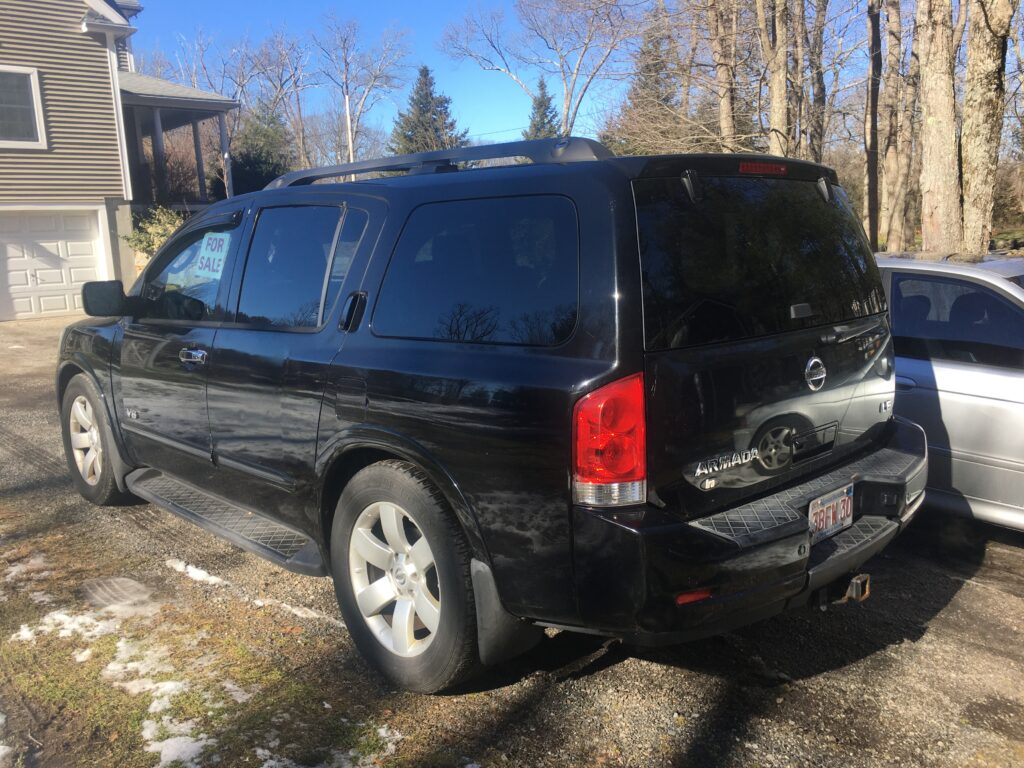
I liked the Armada’s vibe. Yes it’s temporarily wearing my E9’s plate for a very short very careful test drive on local roads.
But it was only 50 minutes away, so I had a look at it. I found that the Check Engine Light (CEL) was on due to a cat inefficiency code, there was clearly an exhaust leak as I could easily hold my hand over the tailpipe without it being pushed off, and the ride and thunking over bumps made it likely it needed front struts. But other than that, I didn’t find much wrong with it.
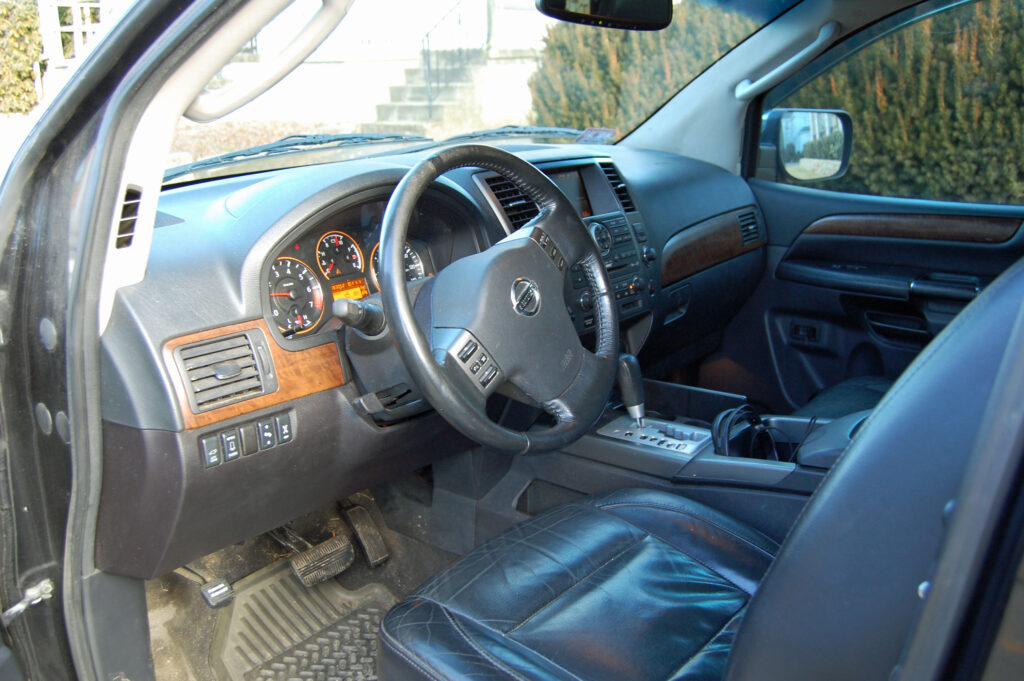
Am I wrong for buying a vehicle because I liked the vibe of the interior?
Economists talk about “opportunity cost”—the hidden price you pay when you’re doing some activity because you’re not spending the time doing something more profitable. While I and every other DIY mechanic regard the concept as bull cookies because we happen to like working on cars thank you very much, I had to admit that the amount of time I’d put into looking for another tow vehicle / stuff hauler was waaaaaaaaaaaaaay out of whack for the role that the car would actually play in my life. That is, it’s not like I was looking for a new daily driver for me or Maire Anne. Like the truck that preceded it and the Suburbans that preceded the truck, whatever I bought would likely sit in the driveway 90% of the time. It didn’t need to be much. It just needed to tow, to have four-wheel drive because nothing else we own does, to have third-row seating because nothing else we own does, to pass Massachusetts state inspection, to cost around four grand, to not be a project vehicle, and for me to not hate it.
I perhaps overcompensated and became gripped by the idea that I could be done with it if I bought this one. The seller said he needed to get $3,500 for it. I mulled that over, decided I needed to think about it, and headed home. I decided that that was high considering the vehicle’s needs and the risk that anything else could be wrong with it and I wouldn’t know without a real test drive, decided that risk was worth about $500, and offered him three grand. We met in the middle at $3,250. I drove down there a second time to pay him and get the title, then a third time when my wife drove me down to pick up the now legally-plated vehicle. The fact that it was the complete antithesis of a single-trip “bag and drag” was not lost on me, but I didn’t care. The drives were short and my tolerance these days for the risk of driving uninsured vehicles is through the floor.
So, I’m the proud owner of a 2008 Nissan Armada LE with the tow package plus nearly every bell and whistle. I have to laugh at the “I don’t want it to be a project car” requirement because, for the short term, it totally is—I have a set of Bilstein front struts on order and I’m trying to see if I can get the car through inspection by patching two holes in the exhaust rather than spending big money to replace it or repair it more properly.
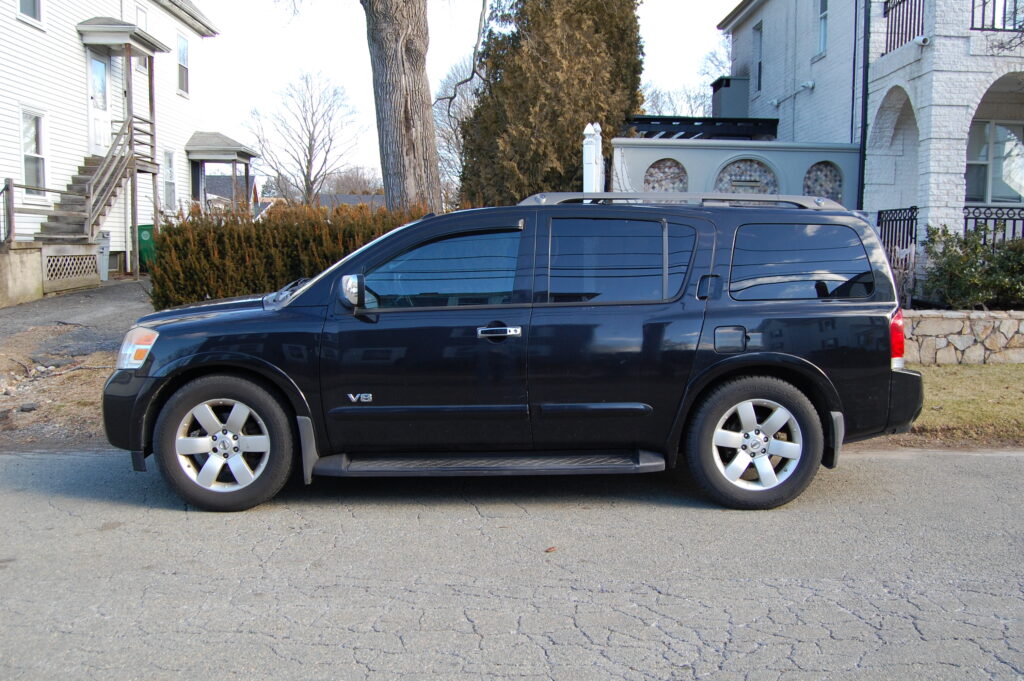
The Armada has made landfall.
I’ve long said that I think about automotive risk differently than most car people. In a world where cars get bid up to insane prices on Bring a Trailer, and where you read things like “You can’t pay too much, you can only buy too early,” I tend to think that if I were to click-and-buy on a shiny-and-pretty vintage car for $30,000, and if I’m half-wrong about it (like provenance, or originality, or rust), I’d potentially be out fifteen grand. On the other hand, on a car like this, there’s really very little risk. That is, the amount of risk really can’t exceed the purchase price, and is unlikely to exceed half the purchase price because it could likely be dumped for that if I wanted to get out of it in a hurry.
And the wonderful thing about the purchase is that I can stop looking for a tow vehicle and go back to looking for vintage BMWs. Or maybe that E46 I said I was interested in. Or another Lotus.
But whatever it is, I’m now loaded for bear. I can bag and drag, baby. Hell, I can show up with a whole freaking Armada. Look out.
And the part about not hating it, well, we’ll just have to see.
—Rob Siegel
____________________________________
Rob’s newest book, The Best of The Hack Mechanic, is available here on Amazon, as are his seven other books. Signed copies can be ordered directly from Rob here.

